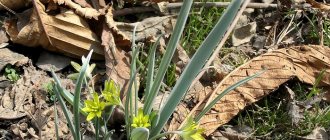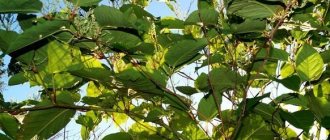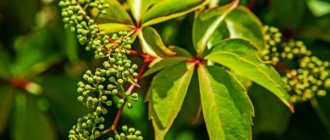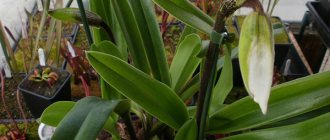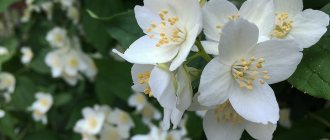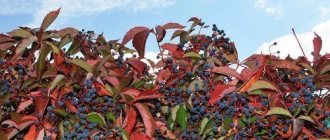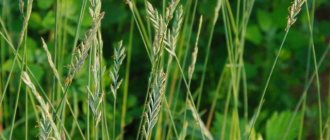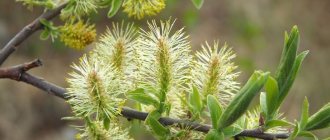Cornflower application
There are a number of recipes in which blue cornflower is used fresh. For example, a drink made from cornflower, the recipe for which is quite simple.
5-7 grams of cornflower petals (a heaping teaspoon) is poured into a glass of boiling water and infused for half an hour.
Tea or a drink with cornflower can be drunk immediately or diluted with boiling water, like tea leaves. This remedy, thanks to the biologically active substances contained in it, will perfectly relieve headaches, fever and swelling, and quench thirst.
Tea prepared in this way perfectly stimulates the appetite if you drink it half an hour before a meal.
Blue cornflower for heart disease
Blue cornflower does an excellent job of restoring the body after heart disease. To do this, prepare an oil extract.
100 grams of herbal mass are crushed, poured with 2 glasses of vegetable oil (preferably olive) and infused in a warm place (preferably in the sun) for 20 days. It is best to use opaque, tightly sealed containers for this. The resulting mixture is filtered and taken 1 teaspoon on an empty stomach every day.
Extraction helps normalize heart pressure, relieve swelling and disinfect the body. The course of treatment is 2 months and can be repeated only after six months.
Collection for hypertension
Take 15 grams of each plant: blue cornflower flowers, chokeberry berries, yarrow, mistletoe leaves, valerian root, hawthorn fruits, horsetail.
Brew one tablespoon of the mixture with 200 ml of boiling water and leave for 30 minutes. Strain and drink 70 ml after each meal.
To relieve eye fatigue
To relieve eye fatigue, puffiness, and restore eye color, use a collection with cornflower.
Flowers of cornflower, snapdragon, eyebright and elderberry are taken in equal parts, crushed and mixed in a dry container. In a ratio of 1 to 100, the mixture is poured with boiling water and infused in a warm place (preferably in a thermos) for 6 hours.
This infusion is perfect for instillation into the eyes, for lotions that are applied to the eyes for 10-15 minutes, after which the skin should be thoroughly rinsed with warm water.
With constant use, the color of the white of the eye is restored, vision improves, and the mucous membrane of the eye is restored. Treatment is carried out in several stages, each lasting a month with breaks.
An infusion of cornflower, prepared according to this recipe, will quickly relieve eye fatigue.
Cornflower flowers - dry or fresh - are poured with boiling water in a ratio of 1 to 20 (2 tsp per glass) and infused in a warm place for 2 hours, well wrapped. Then strain and use for eye baths.
Collection to stop bleeding
Crushed dry cornflower roots are combined in equal parts with crushed yarrow and horsetail herbs. 10-15 grams of the collection (2 tablespoons) are poured with 100 grams of water (half a glass) and boiled over low heat until the liquid evaporates by half. Take 2 tablespoons every hour until the bleeding stops completely and consolidate the result over the next two days, using the same dose once a day.
Cornflower tincture with vodka
Alcohol tincture of cornflower will cope well with jaundice, genitourinary diseases, and kidney diseases.
To prepare it, you need to infuse the dry petals in vodka (100 grams per liter) for two weeks.
One tablespoon of tincture is taken before meals two to three times a day, washed down with plenty of water.
For constipation
Brew 2 teaspoons of cornflower roots with 200 ml of hot water and leave for 2 hours. Strain and take a tablespoon 3-4 times a day before meals 15-20 minutes.
Cornflower in cosmetology
Cornflower is used to rinse hair and as a lotion for wiping oily skin.
Pour a tablespoon of flowers with 0.5 liters of a mixture of vinegar and water, taken in equal proportions. Leave for half an hour and filter. Rub this mixture twice a day into the hair roots. Before going to bed, rinse your hair with plain water.
This lotion helps restore structure and strengthen hair.
To care for oily skin, prepare a lotion by steeping 50 grams of fresh petals in 0.5 liters of boiling water. Leave for an hour and strain.
Wipe your face with this lotion daily. Store in the refrigerator or freeze the cubes.
How is the plant used?
To create medicinal preparations, all parts of plants are used - stems, leaves, inflorescences, roots. They are used to make infusions, herbal baths, they are brewed and steamed, and used in dried form. In cosmetology, where meadow cornflower has also found its application, it is used in cosmetic masks, and infusions are used as lotions. Below is a description of some cosmetic and medical preparations based on it.
In medicine
For sprains and aching bones, a poultice from the cut off ground part of cornflower is used. Harvested plants, preferably freshly harvested, are treated with boiling water, wrapped in gauze, and the resulting hot poultice is applied to the source of unpleasant sensations. For cardiovascular, kidney and colds, the infusion is used. It is made simply: pour 2 teaspoons of the dry plant with a glass of boiling water, leave for a couple of hours and strain. The resulting drug is consumed one tablespoon three times a day a few minutes before meals.
An infusion of dry roots helps with diarrhea. It is made similarly to the previous one: 2 teaspoons per glass of boiling water, 2 hours of infusion and straining. Take in exactly the same quantities before eating.
In cosmetology
Cosmetic masks made from cornflower have a positive effect on the condition of the skin. To make it, take 3 tablespoons of dried flowers and pour 100 ml of boiled water, cooled to +80–90 °C. The container with infused flowers is covered with a lid and left to cool. After this infusion has cooled, it is mixed with 50 g of liquid honey. The mask is applied to clean skin and left for 20 minutes. Cornflower infusion is also used as a lotion. For preparation you need 2 tablespoons of dried flowers. They are poured with a glass of slightly cooled boiling water, kept under the lid until completely cooled and filtered. The resulting infusion is used as a regular body lotion. It is applied to the skin once a day. You can also freeze the infusion in molds. The result is so-called cosmetic ice, which is also used for daily wiping of the skin.
An infusion of cornflower is also used as a remedy to relieve swelling and redness of the eyes. To do this, use a tablespoon of dried flowers per glass of boiling water, cooled to +90 °C. After the infusion has cooled to room temperature, it is applied to the eyelids with a cotton swab. The procedure lasts approximately 20 minutes.
In other areas
In addition to medicinal and cosmetic uses, meadow cornflower is known as a good honey plant. In terms of productivity, it, of course, looks rather pale compared to such champions as acacia or linden, but it pays bribes over a long period. Its productivity is estimated at 100–130 kg per hectare in terms of continuous tracts of this flower.
Article on the topic: Common corysh - useful properties, description
The plant is also used to feed livestock. In addition, it is sometimes used as a decorative plant when decorating flower beds and flower beds.
Weeds: benefits
Decorative varieties of common weeds are a new trend in modern landscape design.
There are plants that sometimes cause harm. These are the so-called weed flowers. But we must still recognize their advantages:
• Among the weeds there are beautiful plants: bindweeds, wrapping their delicate long stems around fences and hedges (with snow-white, pink or red flowers).
• There are edible and healthy weeds: quinoa (strawberry spinach or pigweed), nettle (contains many useful minerals and vitamins), etc.
• Many weeds are good as medicines: dandelion, yarrow, St. John's wort, nettle, etc.
• In the garden, weeds attract beneficial insects necessary for pollinating garden plants (clover, dandelion).
• Most weeds can also be used as good fertilizers (alfalfa, nettle, clover, etc.).
• Weeds can signal the gardener about the composition and acidity of the soil in the garden (the composition of the soil can be determined by the prevalence of a particular weed).
Growing and care
Landing
A suitable place for planting Cornflowers
Basically this plant prefers sunny areas and grows where other flowers rarely adapt. In the presence of strong shade, cornflower blooms much later, and this period is shortened for a long time.
Important! Cornflower is not picky about soil quality, but its decorative properties are reduced when grown in acidic soil. In this case, the flowers are much lighter and the shoots grow weaker.
This grass grows best in nutritious soils with a neutral acid reaction, which can be reduced by liming. To prevent acidity from increasing, it is necessary to add limestone every 3 years during autumn digging. As the soil grows, it is cleared of weeds and loosened after watering.
Many varieties of cornflower are used for growing in flower beds and for decorating gardens in general. This plant is an excellent background for other flowering crops.
Cornflower propagation methods
Like many other plants, this crop is propagated by dividing the bush by cuttings and seeds, which are mainly sown in mid-spring.
For sowing, the seed material must be dried after the autumn harvest. In the spring it is soaked and placed in the ground in a prepared place for germination.
If cornflowers are grown in cold regions, the seeds should be grown as seedlings by the end of March or beginning of April. Only in May, with the disappearance of night frosts, can the seedlings be transferred to open ground.
For annual cornflowers, only seed propagation is typical, when they are sown directly into the soil at the end of May. In this case, seedlings can be seen within a week and it is best to sow immediately in a permanent place. Annual cornflowers adapt poorly after transplantation or do not take root at all in a new place.
Interesting! The best way to propagate cornflowers is considered the laziest and is self-seeding. After ripening, the seeds fall to the ground, and with the arrival of spring they germinate on their own. To grow these plants on other clubs, it is enough to dig them up along with the ground and move them to the desired place.
Self-sowing seeds and planting flowers looks like this:
- embedding is carried out to a depth of no more than 3 cm;
- the distance between the bushes is approximately 20-30 cm;
- seedlings are planted so that the root collar is level with the soil;
- with horizontal roots, the growth bud is deepened by 4 cm.
When planting seedlings, it is necessary to increase the distance between bushes to at least 50 cm.
How to properly care for cornflowers after planting?
Caring for this plant is quite simple and consists of moderate watering as the moisture evaporates from the soil. Too frequent watering can lead to rotting of the root system.
Cornflowers are fed twice a month, using complex fertilizers with mineral components. Fertilizing guarantees active growth of green mass and lush flowering. In order for perennial cornflower to survive the winter well, it needs to be fertilized without nitrogen in late autumn. This also helps to adapt to unfavorable conditions in early spring. The plant recovers faster and begins to grow, producing abundant flowering.
To prevent various diseases, you can sprinkle cornflower stems with powdered wood ash throughout the growing season.
It is also necessary to regularly loosen the soil and remove weeds after each watering or natural precipitation. Cornflower bushes grow very poorly if the area is filled with weeds. They are also a source of various diseases and pests.
If you plan to collect seeds, you must wait until they ripen. In the absence of such a need and to preserve the decorative qualities of cornflowers, the wilted buds are cut off.
Medicinal properties of cornflower
As already mentioned, wild cornflower is used for these purposes, which has diuretic properties and is used by herbalists to treat kidney diseases.
This plant has a special effect on the liver and gallbladder, and can increase the flow of bile. Field cornflower is used during colds as an antipyretic and diaphoretic. The dried flowers of the plant have an analgesic and antispasmodic effect, and kill germs.
Cornflower flowers have a wound-healing effect, eliminate bleeding and inflammation of the gums.
Important! Uncontrolled use of herbal preparations can have harmful effects, especially if the dosage is exceeded. Cornflower can cause poisoning due to the presence of toxic glycosides in the composition.
To obtain the greatest effect, cornflowers must be properly collected and dried well. This plant is harvested at the beginning of the flowering period, during which the concentration of nutrients is maximized.
To collect, use sharp pruning shears; the stems are cut at a height of 7 cm from the base. The cut shoots are tied and dried, hanging upside down under a canopy or in a warm, ventilated room. When drying, you should avoid exposure to direct sunlight, which destroys all useful components.
After drying, all the grass is crushed and scattered in paper bags or canvas bags. The material can be stored for 2-3 years in a dry, ventilated area.
Interesting! Cornflower petals contain a dye that is used to dye natural fabric or wool. To obtain the required solution, you need to take 100 g of flowers and boil them in a liter of water. Next, this mixture simmers on low heat for 30 minutes. After straining the solution, you can pour the flowers again and repeat the procedure. It is better to dye wool this way than fabric, it becomes a light blue color.
How to grow seedlings
How to grow seedlings? Sowing of seedlings is carried out mainly in early April:
- The container for seedlings is filled with earth and compacted a little (as when planting in the ground).
- Small holes of 1-2 cm are made in the ground and moistened with water.
- The seeds are placed in the holes and sprinkled with soil (there is no need to compact the soil again).
- The finished container with planted seeds is wrapped in film to create a greenhouse effect.
- The container is stored in a sunny place at a temperature of about 22 °C.
- After the shoots emerge, the film is removed.
- The sprouts are fed with a special complex fertilizer for seedlings (one time).
- When the sprouts reach 10 cm, they are transplanted into open ground. Cornflowers do not respond well to transplantation, so it is best to replant them together with the soil in which they grew.
Blue cornflower
Blue cornflower (Centauréa)
The leaves located below have solid feathery lobes. While all the others, more linear, are slightly fluffy.
The baskets on which the flowers are located are relatively large in size. They sit mainly at the very top of the stem and branches. The plant blooms bright blue with a purple-blue center.
At the same time, the name cornflower speaks for itself, although in very rare cases the flowers are completely white. As for the fruits, they all have a tuft with a reddish tint. The plant blooms from June to September, usually grows in meadows and is found quite often.
2.Description of the plant - what it looks like
Herbaceous flowering plants with thin, tough, abundantly branched shoots. There are varieties with both vertical stems and ground cover plants with lodging shoots.
The root system is often fibrous, powerful, with many roots, but some species have one taproot - for example, Russian cornflower.
At the base of the plants there is a leaf rosette, which is replaced 2 times a year, and therefore always remains alive and green. The first basal leaves appear in early spring and persist throughout the summer months. The second time the rosette grows overgrown in the fall - before the onset of frost.
The leaves on the shoots are green, linear, reach a length of 5 - 7 cm, sessile, arranged alternately. The leaf blades are entire or with small denticles along the edges; in many varieties they are covered with short light pubescence. Interestingly, the higher the leaf is located, the smaller its size will be.
At the tops of the shoots there are large inflorescences characteristic of the Asteraceae family, consisting of many very small, reed-shaped flowers at the edges and tubular flowers in the center of the basket. Individual flowers have long, narrow petals curved in different directions.
Flower baskets can be colored lavender, purple, blue, pink, yellow, burgundy, red or white. After flowering, dry achenes are formed that are light brown when ripe.
Depending on the species, there are annual, biennial and perennial plants. When damaged, the leaves and stems of the flower emit a specific aroma. The genus is extensive and contains about 500 plant species.
Height. The height of plants varies greatly depending on the species and can range from 20 - 30 cm to 1 m.
2.1.When cornflower blooms
In most varieties, the first buds bloom in June; flowering can last throughout the summer months, until mid-autumn - when it is interrupted by the onset of the first frost.
For each bush, the flowering period can take up to 1.5 months. Sometimes, with timely removal of old buds, re-blooming in the fall is possible.
Features and medicinal properties of other species
There are about 500 varieties of cornflower. The most common of them are blue, white, meadow, whitened, mountain, pink, yellow, large-headed, oriental, spreading, Phrygian, rough and others. Garden varieties of cornflowers have also been bred. In addition to Europe, the flower is found in America and Asia. Two more species of wild cornflower are widespread in Russia - meadow and Russian.
meadow cornflower
- Description of meadow cornflower. Usually grows in dry meadows, near field roads. In crops, unlike blue cornflower, it is rare. A good honey plant. The height of the stem can reach 1 m. The stem is strong and rough, the leaves are oblong, with a fluffy surface. The flowers are solitary, in the form of basket-shaped inflorescences, with tubular inner and funnel-shaped marginal flowers. Color - from pink to purple.
- Healing effect. Meadow cornflower has the same healing effect: it has anti-inflammatory, bactericidal, diuretic, choleretic, and analgesic properties. Cornflower flowers are used for menstrual irregularities. The roots of the plant are also used to prepare an infusion for diarrhea. Fresh stems and flowers can be poured with boiling water; the broth can be used to make lotions for muscle strains. Dried marginal flowers are used for baths for rheumatic diseases. When bathing children, you can add a decoction of cornflower for skin rashes.
Russian cornflower
- Where does it grow? Russian cornflower is found in the Caucasus, the Urals and Altai, Central Asia, as well as in the southeastern regions of Europe. Loves steppes, dry meadows, shrub areas, rocky slopes, limestone and chalk rocks. In a number of Russian regions, this flower is protected and listed in the Red Book.
- What does Russian cornflower look like? This is a perennial herbaceous plant. The stem is covered with down, from 50 to 150 cm in height. The leaves are wide, divided into narrow lobes. The flower is yellow in the form of a single basket. Flowering period: from July to August.
- How is it used in folk medicine? Russian cornflower is not used as widely in folk medicine as meadow and blue cornflower. Its medicinal properties have been little studied; there is no information about side effects when using this type of plant. Its bactericidal properties are known; the decoction is used for digestive disorders. The seeds contain oils suitable for food and are used for technical purposes. Not only flowers are harvested, but also leaves and stems.
The use of blue cornflower has a wide range, since the plant has a diuretic, diaphoretic, choleretic, analgesic, antipyretic, and anti-inflammatory effect. But still, experienced herbalists classify it as an auxiliary supplement for diseases of the digestive system. In folk medicine, blue cornflower is most often used as an external remedy for eye ailments.
Meadow cornflower and its species
Cornflowers are grown in gardens and on personal plots for decorative purposes; some species have medicinal value and are widely used by healers in folk medicine.
Characteristic
Pink meadow cornflower is a perennial, family – Asteraceae. The plant is of herbaceous type, with an erect stem up to 1 m high. Rough to the touch, branching in the upper part. Leaves are lanceolate, elongated.
It blooms throughout the summer, the marginal flowers are pink-lilac, forming basket-shaped inflorescences. Flowers are of two types: marginal - asexual; the middle ones are tubular type, closed, in the active phase of flowering the pollen content is portioned (up to 7 portions). Flowers open upon contact with a pollinating insect and close until the next touch.
The fruit is an elongated ovoid achene. Up to 300 seeds are produced on the plant.
Distribution environment
It is found in meadows, forest clearings and forest edges, in cultivated crops as a weed, and can be seen along railway embankments. In the natural environment, the number of meadow cornflower is decreasing, it is susceptible to destruction by livestock grazing, and is classified as a rare, endangered species.
Contains phytoncides, tannins, glucosides, resins, pectins, vitamins.
Properties
It has antimicrobial, anti-inflammatory, antipyretic properties. Recommended as an analgesic, diuretic, choleretic agent.
Application
Used in the form of alcohol infusions, oil extracts, decoctions, for preparing baths, and is part of complex preparations. Used for cosmetic skin and hair care.
Decoctions are recommended for conjunctivitis, blepharitis, inflammation of the mucous membranes, and diseases of the excretory system and kidneys. Alcohol and oil infusions are used to normalize the functioning of the digestive system, to prevent heart disease, and as an appetite stimulant.
Preparations from Cornflower meadow flowers improve digestion, relieve toothache and headaches, and are recommended for diathesis, rheumatism, and eczema.
Growing
Prefers sunny areas, grows poorly in the shade. It is advisable to allocate a spacious place in the flower bed or in joint plantings, taking into account the possibility of shading by neighboring crops during the development process. Soils are better fertile, neutral or slightly acidic. Moderate moisture, does not tolerate stagnation of water.
Selected seeds and those collected in the natural habitat are suitable for sowing. Seeds retain normal germination for up to three years. They are sown in early spring without seedlings in April; winter sowing is also possible from October. Shoots appear in 10 – 14 days.
Seedlings can be grown, but only in humus pots, planted in a permanent place along with a container. They cannot tolerate regular transplantation and are prone to damage to the root system.
At the end of summer, you can plant by dividing the bush, part of the root with a sprout bud, or transfer the plant from its natural environment to the site along with a lump of earth on the roots. Planting is neat, the roots are straightened in the hole, sprinkled with soil so that the growth bud is at the very surface.
Prefers moist areas and can tolerate short-term drought. Its growth responds well to regular watering, timely weeding and loosening of the soil between rows.
It is rarely exposed to diseases; if infection is suspected, the aerial parts are cut off and burned. Next season, the cornflower will grow healthy shoots.
To prevent self-seeding, the inflorescences are cut off and overwinter better in a rosette. It can live in one place for up to 10 years, provided it is lightly fertilized with complex mineral fertilizers. Excessive soil fertilization leads to yellowing of the leaves and flowering stops.
Raw materials are harvested during flowering. Seeds are collected from plants older than two years.
Preparation of raw materials and storage
Dry in the shade with intensive ventilation. Store for up to two years in canvas bags in a dry, dark place.
It's worth remembering that. that all representatives of the Cornflower family are plants up to 120 cm high, with large, often branching rhizomes. Cornflower can be used to produce honey, as it is honey-bearing. The petals of some members of the family can be used as seasonings, and the flowers and plants themselves can be used as medicines in folk medicine. In this article, photos are attached to the descriptions of each species.
The healing effect of blue cornflower
What are the beneficial properties of cornflower? For what diseases is it used?
Article on the topic: Source of senega - beneficial properties, description
The flower is actively used in homeopathy. First of all, they treat eye diseases. Also, galenic drugs are effective for headaches, hepatitis, cough, kidney, bladder, and blood diseases.
meadow cornflower
Hello dear reader!
Unlike its relative, meadow cornflower is less known. The name is well known, but sometimes it is believed that blue (field) and meadow cornflowers are the same plant. This is wrong.
Growing in meadows, forest edges, clearings, they are either not recognized or mistaken for other plants. But the “cornflower blue nature,” if you look closely, is manifested both in appearance and in beneficial properties.
Meadow cornflower: description, photo
Our two most common cornflowers are both similar and dissimilar at the same time. Meadow cornflower (Centaurea jacea L.) is larger. All parts of the plant look more impressive - the stem, the leaves, and the baskets.
Meadow cornflower baskets
It is a perennial with a short rhizome in the soil. A powerful ribbed stem, branching in the upper part, can grow up to a meter. The lowermost leaves are on long petioles. They are large, broadly lanceolate, sometimes dissected into lobes. The leaves on the stem are sessile, lanceolate, narrow. The leaf blade is rough to the touch - both the top and bottom of the meadow cornflower leaves are covered with short hairs.
By the end of June, the top of the stem and each of its side branches is crowned with a large flower basket. In meadow cornflower it is spherical, light brown, covered with tightly adjacent involucre leaves. Flower baskets on one shoot are located close to each other and form an inflorescence resembling a shield.
When the flowers collected in the basket bloom, you can see that very “cornflower blue” that I was talking about. Barren funnel-shaped flowers grow along the edge of the inflorescence. They are the most colorful and noticeable. Their role is to attract insects. In the center of the basket are tubular bisexual flowers with five stamens and a pistil. Meadow cornflower usually begins to bloom in July and blooms until late autumn.
Meadow cornflower - pink flowers in baskets, narrow leaves
This is how the inflorescences of all cornflowers are arranged - blue, Phrygian, rough, Russian and others. But the color of the flowers of meadow cornflower is not blue, but pink or pale lilac. Although substances from the anthocyanin group are also responsible for the color of the corollas, blue cornflower is sometimes pink, but meadow cornflower is never blue.
It is curious that in its normal state the tubular flower is closed. And hidden in its tube is a small portion of pollen - a compact “briquette”. When a bee, bumblebee or other large insect lands on the basket, a certain “mechanism” is triggered - the flower opens, pushing out pollen. And the “parcel” is glued to the insect’s abdomen.
Meadow cornflower is sometimes confused with thistle. But let's take a closer look - all the flowers in the basket of the thistle are of the same type, tubular. There are no funnel-shaped flowers along the edge. (In the photo there is a basket of thistle.) When the fruits begin to ripen, the differences are immediately visible. After all, meadow cornflower does not have such long fluffy tufts. Its achenes may have only a few off-white bristles 1–2 mm long.
Benefits of cornflower
This is an excellent honey plant that produces tasty and valuable honey. The fodder plant, despite its tough stem, is well eaten by domestic animals.
Speaking about blue cornflower, I doubted its “harm” as a weed. But almost no one calls cornflower a weed. You come across it in the fields, but not often.
And, of course, meadow cornflower is a medicinal plant! And how could it be otherwise - after all, almost all representatives of the Compositae family are healing. During flowering, meadow cornflower stems with leaves and flower baskets are collected. They dry it “standardly” - in the shade under a canopy. Sometimes rhizomes are also collected. They should be harvested after flowering has ended, in the fall.
For the treatment of eyes, like blue cornflower flowers, the herb of its relative is unsuitable. She has her own purpose. Used for various inflammatory processes, like many other members of the family.
In addition, cornflower grass has a diuretic and choleretic effect and helps relieve pain. Lotions of fresh leaves steamed in boiling water can be tied to sore spots. Powder from dry leaves is sprinkled on tumors and swelling.
The main remedy is water infusion. 2 teaspoons of dry crushed herbs are poured into a glass of boiling water, left for an hour or two, and filtered.
Drink 1 tablespoon 3-4 times a day before meals for jaundice, dropsy, and delayed menstruation.
A decoction of rhizomes is taken for diarrhea as an astringent, antimicrobial and anti-inflammatory agent.
Meadow cornflower is not the only “pink cornflower” in our nature. Phrygian cornflower is very common. I also intend to introduce readers to this plant. If you have not yet subscribed to blog news, I advise you to do so right now by clicking on the picture below.
Features of the plant
Habitat
The birthplace of this beautiful flower is the Mediterranean basin. Blue cornflower (field, sowing) is a well-known and beloved flower, distributed throughout Russia. It can also be seen in the Far East and Siberia, in the Central Asian and Caucasian regions. Can grow in forest areas and forest-steppe. Abundant in grain fields, especially wheat and rye. It is also often found near roads, in forest belts, and roadside plantings. In dry meadows it can be seen next to chamomile and poppy. Blue cornflower is considered a weed. For many years the plant was exterminated, which led to a significant decrease in the number of cornflowers. Therefore, today this species is protected.
Botanical description, chemical composition and procurement of raw materials
Blue cornflower. Botanical illustration from the book “Bilder ur Nordens Flora” by K. A. M. Lindmann, 1917-1926.
Description of blue cornflower. The root of the plant is thin and vertical. The height of the stem can be from 30 to 50 cm, sometimes higher. Leaves with thin felt, stem, sessile. The flowers are solitary, basket-shaped, the outer flowers are bright blue and funnel-shaped, the inner ones are tubular in shape and purple in color.
- Active ingredients. Blue cornflower flowers contain the following useful substances: anthocyanins, glycosides, carotene, alkaloids, wax, saponins, bitterness, tannins, pectins, blue dye, ascorbic acid. It also contains many flavonoids, essential oils and mineral salts.
- Collection and storage. They begin collecting raw materials in June and finish collecting them in September. Herbalists advise cutting the flower and stem. The plants are then tied into bunches and dried indoors with access to fresh air. It is in this form that the flower retains its blue color, which is its value. For treatment, marginal flowers are used. It is better to store them in canvas bags, wooden boxes or paper bags. Keep away from sunlight and dampness.
Meadow cornflower - medicinal properties
Synonym
- Voloshka is an archer.
Latin name:
Centaurea jacea.
English name:
brown knapweed, brownray knapweed.
Family:
Asteraceae - Asteraceae.
Common names:
bell
Pharmacy name
: Grows in Great Britain, Ukraine and other European countries, America, Asia, Russia. It is found along the edges of forests, clearings, roadsides, as a weed in vegetable gardens and fields of cereal crops.
Parts used:
flowers, grass.
Botanical description.
Meadow cornflower is a perennial herbaceous plant, the stem up to 10-80 cm high is coarser than that of, the leaves are lanceolate or ovate-lanceolate, elongated, grayish from pubescence, the flowers are lilac-pink baskets. Blooms from June to September inclusive.
Habitat.
Grows in Great Britain, Ukraine and other European countries, America, Asia, Russia. It is found along the edges of forests, clearings, roadsides, as a weed in vegetable gardens and fields of cereal crops.
How does meadow cornflower grow?
Collection and preparation.
The grass (flower baskets, stems, leaves), sometimes only inflorescences, is harvested during the flowering period (June-August). Dry under canopies in the shade, in dryers or well-ventilated areas. Raw materials are stored for 2 years. The roots are harvested in late autumn.
Chemical composition.
The chemical composition has been little studied. The plant contains xantho-glycoside centaurine, tannins; Traces of alkaloids, ascorbic acid, were found in the leaves. The seeds contain up to 16% fatty oil.
Use in folk medicine
ATTENTION!
Self-medication is dangerous! Before treating at home, consult your doctor.
Recipes for treating cornflower meadow
- throat
(acute tonsillitis). Pour 1 tablespoon of meadow cornflower herb into 500 ml of boiling water, wrap, leave for 1 hour. Strain and add to original volume. Drink like tea. - Ascites
(dropsy). Pour 2 teaspoons of dry herb into 200 ml of boiling water, wrap and leave overnight. Strain in the morning. Drink 1 tablespoon warm 5-10 minutes before meals. - Inguinal hernia
(keel). Drink 2 cups a day of infusion of cornflower flowers. For 500 ml of boiled water, take 3 teaspoons of flowers for an inguinal hernia. - Metrorrhagia
(uterine bleeding during menopause). Pour 2 teaspoons of dry cornflower grass into 200 ml of boiling water, wrap and leave for 5 hours. Strain and top up to original volume. Drink 1 tablespoon 5-10 minutes before meals. - Neurasthenia
. Pour 50 grams of herb with roots into 1 liter of water, heat in a boiling water bath for 15 minutes, remove from heat and leave for 45 minutes. Strain and top up to original volume. Drink 50 ml before meals (preferably warm). The course of treatment is 5-6 weeks. The action is good, without side effects. - Strained muscles and tendons
. Fresh grass is doused with boiling water and wrapped in thin cloth or gauze. Poultices are applied to sore spots. - Cholangitis
(inflammation of the bile ducts). Pour 2 teaspoons of dry cornflower grass into 200 ml of boiled water and heat in a boiling water bath for 15 minutes. Leave for 45 minutes. Strain and top up to original volume. Drink 1 tbsp. 5-10 minutes before meals. - Cholelithiasis
(stones in the gall bladder, bile ducts). Pour 2 teaspoons of dry herb into 200 ml of boiling water, cover and leave for 1-2 hours, strain and top up to the original volume. Drink 1 tablespoon 5-10 minutes before meals. - Stye on the eye
. Make hot poultices for eyelids from a decoction of cornflower herb.
Contraindications.
Since meadow cornflower has been little studied, it is better to play it safe and avoid using the plant during pregnancy, breastfeeding, and children under 12 years of age. Before starting treatment, it is better to consult with your doctor if he understands anything about plants.
Meadow cornflower is a perennial herbaceous plant belonging to the genus Cornflowers, family Asteraceae (another name is Asteraceae). Considered a weed. The birthplace of this flower is Southern Europe. The color of the plant can be purple, pink, or less often white. On top of it you can see a cobwebby cover. Flowers are collected in baskets.
Description and photo
The meadow cornflower species (Centauréa jácea) is a perennial herbaceous plant belonging to the genus Cornflowers, which is part of the Asteraceae family (another name is Asteraceae). The stem, sometimes reaching 1 m in height, branches in the upper part, the tops of the branches are crowned with inflorescences. The leaves are narrow, elongated, and appear silvery due to the fact that they are covered with tiny hairs. The flowers are collected in inflorescences in the form of a basket of lilac-pink or lilac-purple colors.
History of a flower
The ancient Greeks knew about cornflower. He was mentioned in Meleager's poem "Introduction to the Crown". Cornflower is familiar to many from children's fairy tales and poems. It was first brought to Europe along with rye. The Slavs decorated birthday sheaves with cornflowers and brought them home with songs. A sheaf entwined with cornflowers decorated the front corner of the hut and was a symbol of the harvest. The ornament in the form of ears of rye with cornflowers was popular among needlewomen.
meadow cornflower
There is one story in Russia. When I. Krylov suffered a stroke in 1823, Empress M. F. Romanova sent him a bouquet of flowers and invited him to Pavlovsk to improve his well-being. This touched the fabulist, and later the work “Cornflower” appeared, where he is a fading flower, and the empress is the sun.
Today this plant is used in folk medicine and has an anti-inflammatory and analgesic effect. The infusion is used for heart disease, pain in the head and stomach, and dropsy. An infusion of the plant's baskets can be used for eczema, when bathing a child with diathesis. If the herb is steamed, it can be applied to stretched muscles and tendons. The healing properties are due to the presence of many useful elements in cornflower: manganese, copper, zinc, cobalt, chromium, nickel, potassium, calcium, magnesium, iron.
Important! Not much is known about the medicinal effects of meadow cornflower, so you need to consult a doctor before you start using medications made from it. The use of such drugs is strictly contraindicated for children, pregnant and breastfeeding women. Meadow cornflower as a honey plant is drought-resistant, therefore it is just suitable for beekeepers during the dry summer period
As for honey productivity, at a favorable time it can produce approximately 110-120 kg of honey from 1 hectare of continuous land. Each flower contains about 5 “portions” of pollen. Bees willingly collect it from this flower
Meadow cornflower as a honey plant is drought-resistant, therefore it is just suitable for beekeepers during the dry summer period. As for honey productivity, at a favorable time it can produce approximately 110-120 kg of honey from 1 hectare of continuous land. Each flower contains about 5 “portions” of pollen. Bees readily collect it from this flower.
Bee collecting pollen
Cornflower blue
An annual or biennial herbaceous plant. Used to treat eye diseases, urinary tract, pancreas, skin diseases. Also used as an analgesic and antipyretic.
The healing properties of blue cornflower were described back in Ancient Greece. The followers of Hippocrates believed: since a flower has such an attractive, beautiful appearance, it must certainly have beneficial properties. "Centaurea" is translated from Latin as "centaur". The ancient Greeks associated the name of the flower with the centaur Chiron, who was famous for the gift of healing. From ancient Greek medical books, the description of blue cornflower and its effects migrated to medieval herbalists. The petals and seeds of this plant were used to treat a variety of diseases: pestilence, to stop bleeding, as an antidote to the bite of poisonous spiders, inflammation of the eyes, bruises, suppuration of wounds, skin diseases.
Description
Meadow cornflower is a herbaceous plant, perennial. The root is short and woody. The stem is straight, strong, 30-100 cm high, coarser than that of blue cornflower, branched in the upper part, rough, pubescent, ribbed. Leaves - lanceolate or ovate-lanceolate, alternate, pinnately lobed or entire, pointed, green, grayish with pubescence; the lower ones are on winged petioles, the upper and middle ones are sessile.
Inflorescences are single, large, spherical-ovate baskets, 1-2 located at the ends of the branches and stem. The unopened basket is a smooth yellowish ball. There are 2 types of flowers in the basket: marginal - asexual (without stamens and pistils), funnel-shaped. Their goal is to attract insects to the middle - outwardly more modest - tubular flowers with stamens and a pistil. The flowers are purple-lilac. Involucre leaves with membranous light brown unequally toothed appendages. Meadow cornflower blooms from June to October, mass flowering ends in August. The fruits are elongated-ovoid, slightly shiny gray achenes, with longitudinal stripes, slightly pubescent with short hairs, with a rudimentary tuft. Ripen in July-October.
Unpretentious. Propagated by seeds and vegetatively. It is found in Europe, North America, in central Russia, less often in the southern part, in the Caucasus. It also exists in Ukraine, mostly on the Left Bank. It grows in meadows, steppes, dry hillsides, forest clearings, forest edges, among bushes, along roadsides.
Cornflower flower description
Centaurea cyanus L.
Cornflower Centaurea is a genus of herbs in the Asteraceae family. In Russia it grows almost throughout the country, the most common species are blue cornflower and meadow cornflower, both types of cornflowers are medicinal plants.
Blue cornflower is found in all grain crops in our fields - among spring and winter crops of wheat and rye, it grows along the edges of fields, along roads, in wastelands. A small number of cornflowers in the fields, according to research, increases the yield of grain crops. This is an annual or biennial plant with a straight branched stem up to 50 - 80 cm high.
There are many legends about the bright blue color of field cornflowers. One ancient Greek legend tells how one day heavy ears of rye turned to the blue sky with a complaint that they could not see it when they were bowing under the weight of the grains. The sky promised that it would come down to them, and it came down to them, and when it rose again, the pieces of the sky that remained among the ears of rye turned into blue flowers, over which the ears of grain are now bending and looking at them, rustling and whispering.
Blue cornflower probably spread along with rye and wheat, and in ancient times was brought to Central Europe from Mediterranean countries.
Let's return to the description of blue cornflower. The lower leaves of cornflower are petiolate, pinnately lobed, while higher up the stem they are sessile and linear. The leaves are pubescent with hairs.
The flowers are collected in single baskets located at the ends of the stems and branches. The marginal flowers in baskets are funnel-shaped, enlarged blue, sometimes blue or white, sterile. The internal flowers are blue-violet, tubular, bisexual, form fruits - oblong cylindrical achenes 3÷5 mm long, gray in color with a thick reddish tuft, with the help of which they spread with gusts of wind.
Blue cornflower blooms in June - July; about 6,000 achenes are formed on one plant. In folk medicine, marginal asexual flowers are used for medicinal purposes.
Cornflower flowers contain flavonoids, bitter glycosides, carotene, ascorbic acid, and coloring matter. They are collected by hand when the cornflowers are in full bloom, trying to avoid the internal, tubular flowers, which in some cases degrade the quality of the raw material.
The flowers are dried, spread in a thin layer, protected from bright light, and stored in a dark place. The dried flowers are bright blue, odorless, and have a bitter, astringent taste.
The healing properties of blue cornflower have been known since ancient times. The therapeutic effect of cornflower petals is due to the presence in them of tannins, mucous, resinous substances, organic acids, and microelements. Ancient manuscripts describe the treatment of deep wounds with crushed cornflower seeds and the removal of warts.
The scientific name of blue cornflower Centaurea was given by the Swedish botanist Carl Linnaeus in honor of the mythical centaur Chiron, who widely used medicinal herbs, and cornflower juice healed his wounds and the wounds of the heroes of his time.
The specific name cyanuc is derived from the Greek word kyanos - dark blue, indicating the color of the flowers. Another legend of Ancient Rome tells about the young handsome Cianus, who was very fond of the color blue. He died unexpectedly and was found in a grain field. The goddess Flora, very revered by the young man during his lifetime, turned him into a blue cornflower, since then both the flower and the color began to be called cyanus - blue.
And the Russian name of the genus cornflower - from the Greek word basilikon means royal potion, and this name is also associated with the popular name Vasily.
Use of cornflowers for decorative purposes
These perennials are used to decorate garden plots and ponds. Low plant varieties can be placed in the foreground, for example, meadow, mountain or whitewashed cornflower. These clubs are diluted with daisies or cinquefoil.
In addition to cultivation, cornflowers are used as dried flowers that decorate any room. Winter bouquets and various crafts are created from cut shoots. In order for the dried branches of cornflowers not to lose their color, they are dried between thick cardboard, in semolina or sand.
Reproduction methods
Annual and perennial cornflowers are convenient to grow from seeds. Sowing is done immediately in open ground or in containers (if you plan to decorate the balcony and veranda). In mid-April, the soil is prepared for planting: it is dug up and loosened. The soil should be non-acidic. It is believed that cornflowers grow better on calcareous soils and the color of the petals is brighter. Seeds remain viable for up to 3 years. They are sown without pre-treatment in holes 2-3 cm deep. Try to distribute them evenly, not densely. Shoots appear after 2 weeks. As they grow, they are thinned out. First, leave a distance of 20 cm, and then for tall varieties increase it to 50 cm. You can sow the seeds in October-November, then in the spring the seedlings will appear earlier and, accordingly, flowering will begin earlier.
Some gardeners grow seedlings. Seeds should be immediately distributed into peat pots, as the root system is easily damaged. Before planting in open ground, it is kept at a temperature of +18°C.
Perennial cornflowers can be propagated by dividing the rhizomes. At the end of the flowering period (August), a strong bush is dug up and completely freed from the earthen clod. The roots are washed in warm water. The stems are trimmed to a height of 10 cm. The rhizome is divided into segments using a knife or shovel. You can simply break it into pieces with your hands. Each division must have at least 3 buds. Immediately after the manipulation, the plants are planted in a new place.

